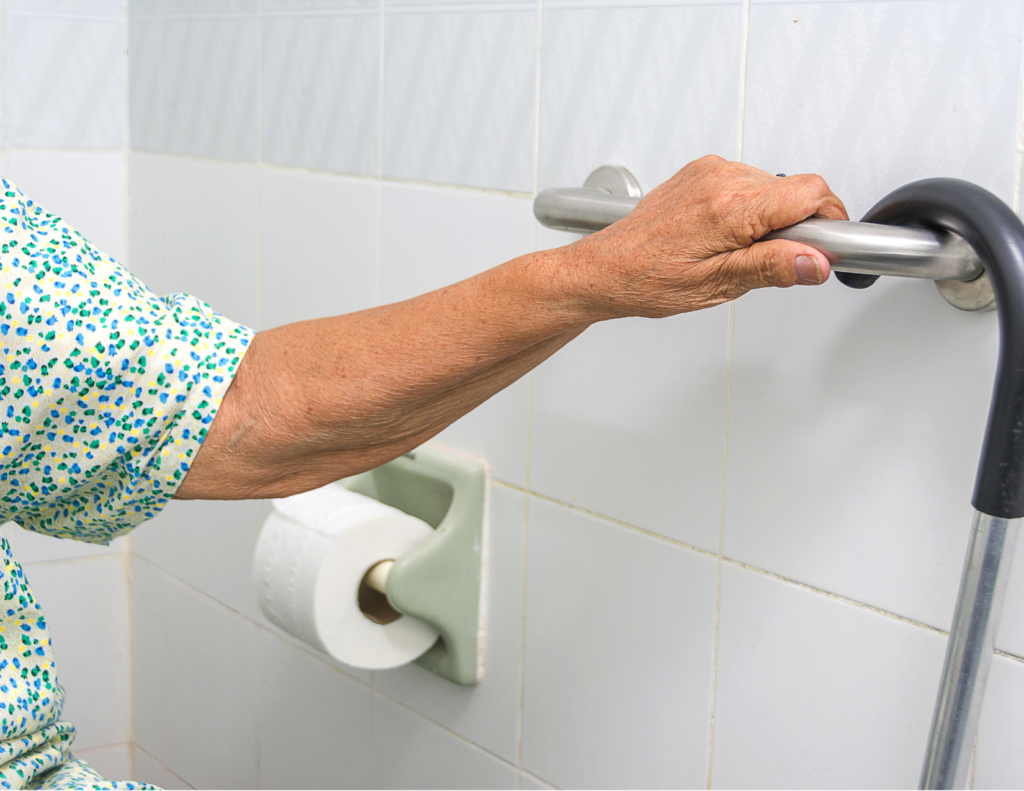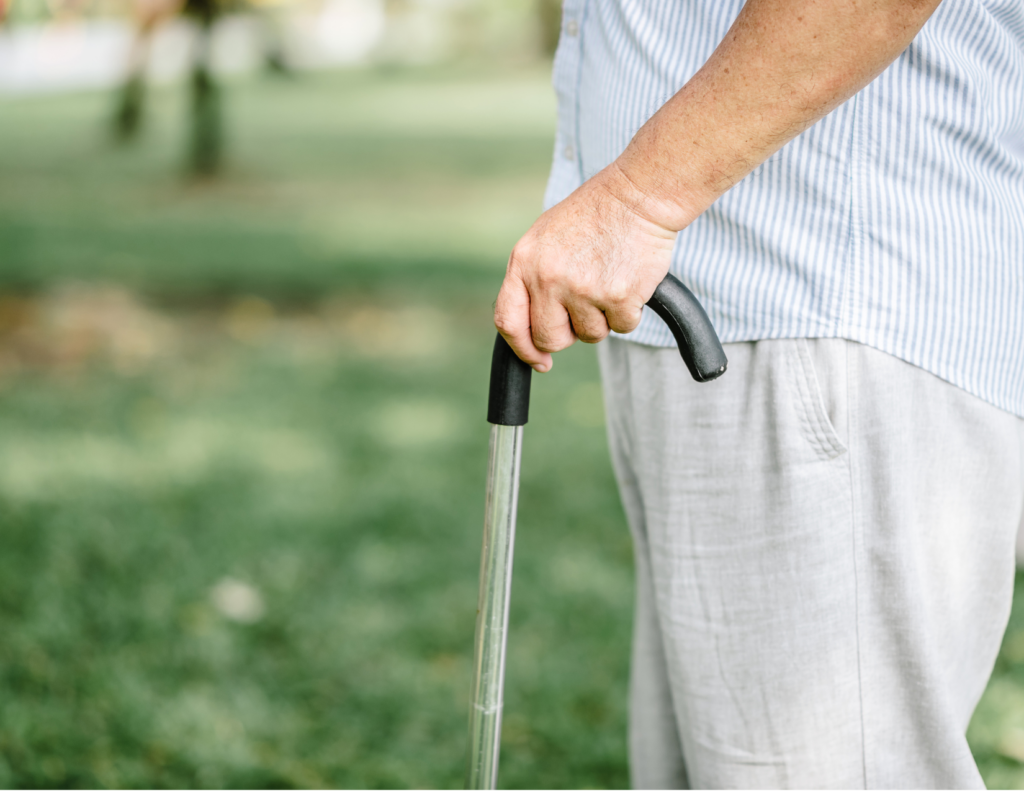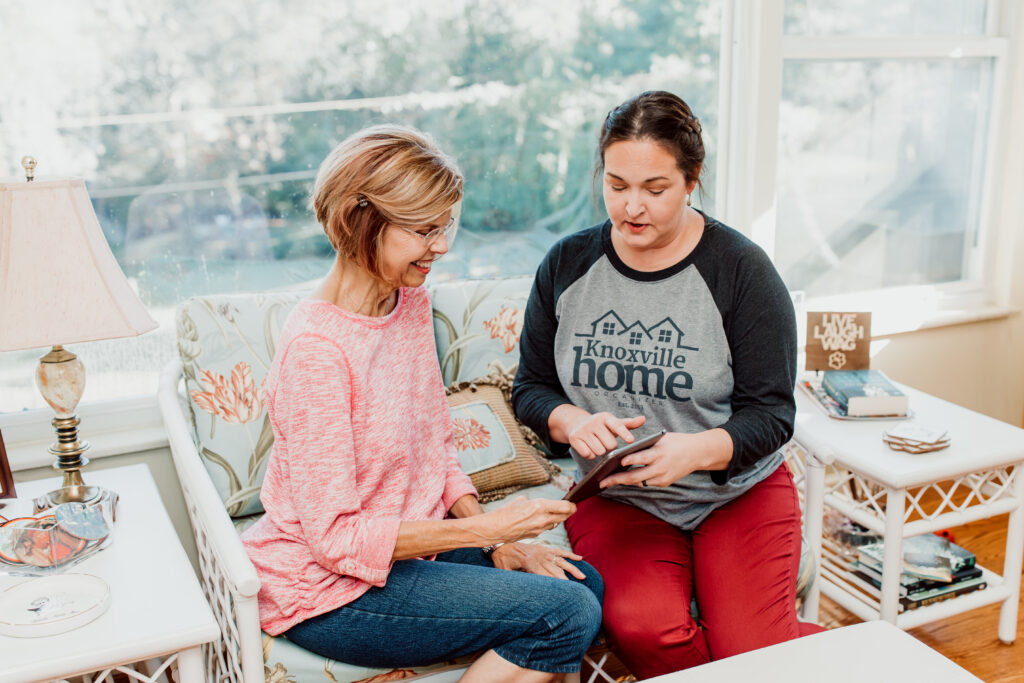
In Spotting Mobility Challenges in Aging Parents: Part 1, we explored how subtle signs like difficulty standing, slower walking, and avoiding certain areas of the home can indicate growing mobility issues. Recognizing these early cues can be a transformative first step toward preventing injuries and preserving independence.
Now, in this second post, let’s dive into practical, proactive strategies that address mobility concerns head-on, empowering your parents to remain safe and comfortable in the home they love.
Proactive Steps to Address Mobility Challenges
1. Open the Conversation

Approach the topic gently and without judgment. For example:
“I noticed you’re holding onto the counter more often when walking. Is it feeling harder to move around lately?”
Listen actively. Many aging adults fear being a burden and may downplay issues. Reassure them that your goal is to help maintain their independence, not take it away.
2. Conduct a Home Walkthrough Together

Ask your parent to take you on a “mobility tour” of their home, looking for potential hazards like uneven floors, slippery rugs, or tight spaces. This may also give you insight into what your parent perceives as an issue, or an area that needs to be addressed. Moreover, allowing your parent to lead can also give you insight into their cognitive, vision, and decision making abilities. Discuss how these areas feel to navigate, and suggest changes together to preserve comfort and dignity.
3. Address Immediate Safety Concerns

- Remove trip hazards such as loose rugs, cords, or clutter.
- Install grab bars in high-risk areas like the shower and near the toilet.
- Add non-slip mats in the bathroom.
- Eliminate clutter from floors, furniture, and surfaces.
In addition to these initial steps, encourage your parent to come up with solutions themselves. In many instances, they may know what needs to be done but they may not know how, or they may be physically unable to do it. The more you allow them to lead themselves to water, the easier it will be for them to take a drink!
4. Simplify Their Environment

- Create clear, wide walkways by decluttering and rearranging furniture.
- Move frequently used items to accessible locations to minimize bending and stretching.
- Consider consolidating daily activities to one level of the home if stairs are too challenging.
5. Encourage Mobility Supports

- Promote the use of physical therapy–prescribed assistive devices like canes or walkers, emphasizing that these tools enhance safety and freedom.
- Explore adaptive clothing or kitchen tools that make dressing and cooking easier. An occupational therapist can offer invaluable guidance.
6. Partner with Professionals

- Physical Therapy (PT): A PT can assess strength, balance, and walking mobility and design a personalized exercise program. After working for 25 years as a physical therapist assistant, I’ve seen firsthand how our bodies and environmental needs evolve with age, along with the benefits of physical therapy.
- Occupational Therapy (OT): Occupational therapy helps aging-in-place seniors translate mobility into function by adapting their environment and teaching safe movement strategies for greater independence. An OT can also recommend home modifications and tools to boost function.
- Aging-in-Place Home Organizer: Knoxville Home Organizer is East Tennessee’s only aging-in-place home organization company specializing in creating safe, functional spaces tailored to mobility needs through decluttering and home organization.
7. Foster Healthy Habits

- Encourage gentle daily exercise like walking or water aerobics.
- Stress the importance of hydration and a nutrient-rich diet to support joint health and energy.
When to Consider More Significant Changes
If mobility challenges progress, you may need to look at more extensive solutions:
- In-Home Care Services: Home aides can help with personal care, meal prep, and errands.
- Aging-in-Place Modifications: From stairlifts to bathroom renovations, the right upgrades can ensure safety.
- Downsizing: Sometimes a more manageable home or senior living community is the best option for long-term well-being. Our move organization services can assist with this transition.

Final Thoughts
By staying attentive to mobility challenges and taking action early, you can help your parents avoid preventable injuries, maintain their independence, and age gracefully in the home they love longer. These conversations and observations may feel difficult at first, but they are an act of love that ensures their well-being and dignity. Addressing these issues early and often is key to maintaining your aging parents’ safety and independence.
If you’re feeling overwhelmed, know that you’re not alone. At Knoxville Home Organizer, we specialize in helping families like yours create safer, more functional spaces for aging parents through services like decluttering, downsizing, organization, move management, etc. Let us be part of your support system as you navigate this journey together.
In your corner,

Allison and the KHO Team
Additional Resources on This Topic:
- National Council On Aging – Falls Prevention
- What Are the Must-Have Home Modifications for Aging in Place
- 6 Ways to Reduce Fall Risks for Senior Adults
- How Adult Kids Can Talk to Their Parents about Aging in Place
If this post content has been helpful to you and you know someone else who would benefit from this content, would you please share it using the options below? Sharing is such a simple way to spread a little encouragement!
